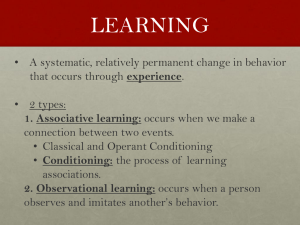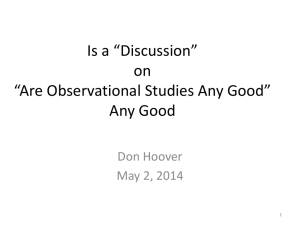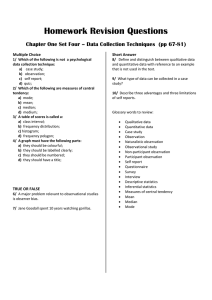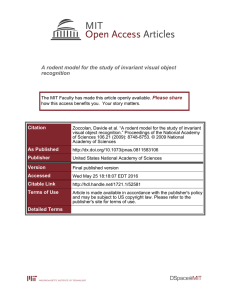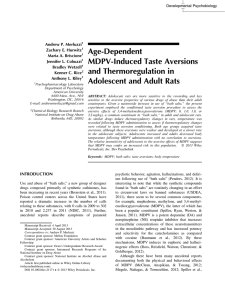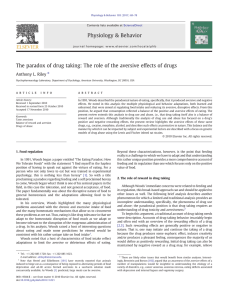Module 22 Biology, Cognition, and Learning
advertisement
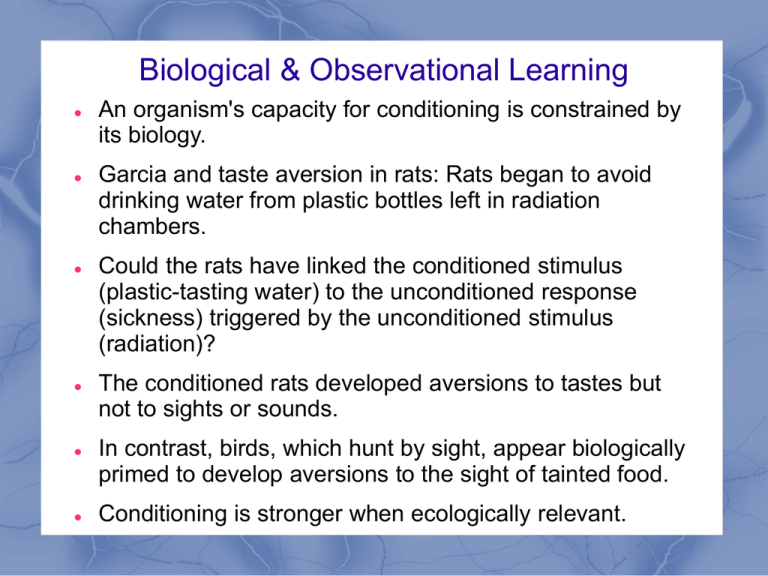
Biological & Observational Learning An organism's capacity for conditioning is constrained by its biology. Garcia and taste aversion in rats: Rats began to avoid drinking water from plastic bottles left in radiation chambers. Could the rats have linked the conditioned stimulus (plastic-tasting water) to the unconditioned response (sickness) triggered by the unconditioned stimulus (radiation)? The conditioned rats developed aversions to tastes but not to sights or sounds. In contrast, birds, which hunt by sight, appear biologically primed to develop aversions to the sight of tainted food. Conditioning is stronger when ecologically relevant. Biological & Observational Learning In human females, enhanced blood flow produces the red blush of flirtation and sexual excitation. This is the real reason that gentlemen prefer blondes: their blushes are easier to see. Fig. 22.2 In a series of experiments that controlled for other factors, (such as the brightness of the image), men found women more attractive and sexually desirable when framed in red. (Elliot & Niesta, 2008). Under normal circumstances, revulsion to sickening stimuli is adaptive; sometimes, as in Fig. 22.3 it is not. Organisms have an instinctive drift that will return them to those behaviors for which they are biologically constrained and are naturally adapted. Pigeons won't peck with their wings. Biological & Observational Learning In Cognitive Learning, we acquire mental information that guides our behavior. Rescorla, 1972: an animal can learn the predictability of an event. The more predictable the association, the stronger the response. This is the definition of expectancy, an awareness of the likelihood (statistically, but still biological) of the unconditioned stimulus. Cognitive map: a mental representation of the layout of one's environment. Latent learning: learning that occurs but is not apparent until there is an incentive to demonstrate it. Observational learning: modeling by imitating a specific behavior. Biological & Observational Learning Rizzolatti, 2006: Mirror neurons provide a neural basis for imitation and observational behavior. When a monkey grasps, holds, or tears something, these neurons fire. And they likewise fire when the monkey observes another monkey (or human) doing so. So strong is the human predisposition to learn by observing that children overimitate. Researchers can used fMRI scans to see brain activity to model and share another's experience. Fig. 22.7 Brain activity related to actual pain is mirrored in the brain of an observing loved one. Empathy in the brain shows up in emotional brain areas, but not in the somatosensory cortex, which recieves the physical pain input.

